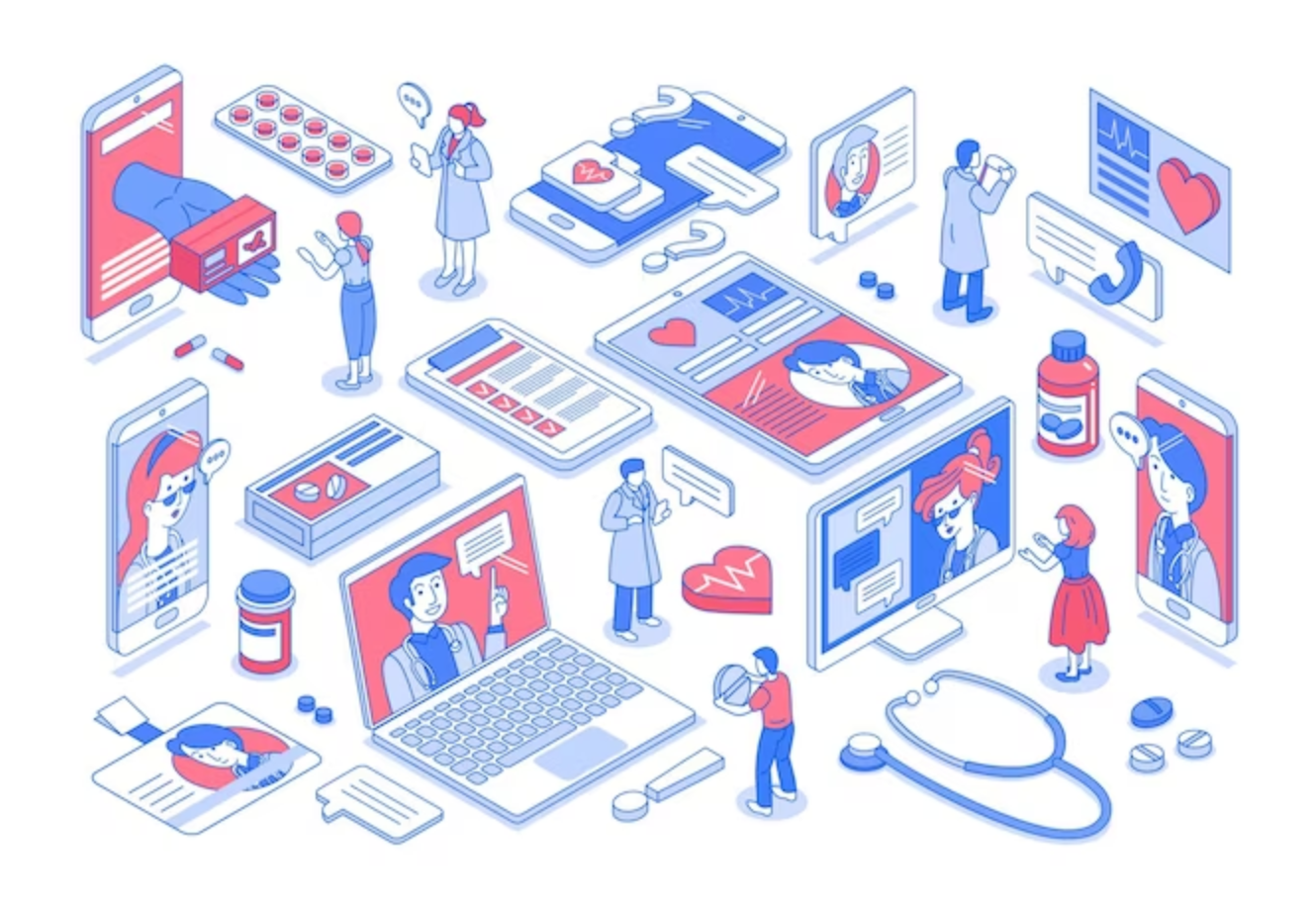Introduction
Digital Health, is the confluence of the broad realms of Information Technology and Healthcare. Some of its most common applications include mobile health (mHealth) apps, electronic health records (EHRs), electronic medical records (EMRs), wearable devices, tele-health and personalized medicine.
As more of the daily life is digitized, the health space is becoming increasingly reliant on technology, not only to revolutionize health care, but also to continue and maintain its services at an acceptable level.
The significance of Digital Health has become even more significant, particularly in light of the COVID-19 pandemic. Modern solutions look to fill this and every gap possible, improving relationships between patients and their doctors, expanding preventive disease strategies, shifting healthcare toward value-based treatment and increasing access to health information.
According to Grand View Research, the global digital health market size was valued at USD 211.0 billion in 2022 and is projected to grow at a compound annual growth rate (CAGR) of 18.6% from 2023 to 2030.
Applications of Digital Health
Mobile Health: This realm involves using mobile devices to collect community and clinical health data, delivering healthcare information to patients, healthcare providers and researchers. It also carries out real-time patient monitoring to provide direct care.
Health Information Technology: This includes electronic medical records and electronic prescribing. EMRs contain comprehensive medical information, such as health issues, list of prescribed medication, immunisations and laboratory data. They help healthcare providers make informed and accurate decisions about treatment. Electronic Prescribing simplifies the medication prescription process by replacing paper-based prescriptions with electronic data that can be sent directly to the pharmacy of a patient’s choice.
Precision Medicine: When diagnosing and treating patients, Precision Medicine takes the genetic differences, environment and lifestyle into account. Practically, the implementation of this is still far away in the future, but to reach its full potential data management needs to play a pivotal role.
Predictive Analytics: This realm uses algorithms, machine learning, artificial intelligence, and statistical methods to predict outcomes for individual patients by searching and analyzing vast amounts of information.
Tele-health and Tele-medicine: Tele-health involves the use of Information and Communication Technology (ICT) to deliver care-related services and information to patients and carry out administrative activities. Tele-medicine involves the exchange of medical information from one site to another to improve a patient’s health.
Wearables: Smart Wearable Tech can perform a variety of activities. For instance, Fitbit not only counts the number of steps taken per day and monitors heart rate and sleep, but also predicts approaching menstrual cycles and fertile windows for women.
Connected Devices: The connection of smart devices by IoT technology has brought many benefits. For example, with Bluetooth-enabled pacemakers, heart patients can transmit their data to the doctors through their mobile phones or other smart devices.
AI-enabled Checkups: Use of AI can assist in generating prognoses of medical conditions. For example, Selvy Checkup, a healthcare solution developed by Selvas AI, predicts an individual’s risk of major diseases developing in the next four years, based on the examination of data.
Digital Epidemiology: This realm tries to understand the trends and patterns of diseases in a population. For example, the Digital Epidemiology Lab developed an application called Crowdbreaks to track trends about major disease-related issues in real-time.
Biotechnology/Bioinformatics: These fields involve using heavy computing resources to study genetics and other biological data. Perhaps the most popular bioinformatics products are take-at-home DNA testing kits, such as 23andMe and HomeDNA.
Medical Robotics: This realm involves machines aiding in surgery, nursing and blood services with great precision and accuracy. There is greater possibility for better diagnostics, less invasive surgery, quicker recovery, and less waiting time.
Advanced Prosthetics: This field involves 3D printing of prosthetics which is revolutionizing their design and production by making them more affordable, with the possibility to fully customize them.
Issues related to Digital Health
Technology and Infrastructure: We want to build technological infrastructure in such a way that will allow interoperability between organizations – that is data can be shared. So this is an important issue
Cybersecurity: Health data is, by definition, sensitive, and health-data breaches carry a significant extra burden in how the public relates to them. So methods such as encryption are necessary
Legal and Regulatory: Who can avail health data and how it can be used is a question for laws and regulation. Jurisdiction issues concerning health data collected by devices or wearables further complicates the issues.
Economic: Practices that build customer trust factors into decisions that consumers make when dealing with technology-enabled products and services, and even more so when it relates to their health. Transparency about the facets of technology can foster customer trust and help build the economy.
Conclusion
The application of information technology to provide digital health solutions to prevent diseases and improve quality of life isn’t a new concept. However, in the face of global concerns, such as aging, child illness, mortality and the high cost for access to healthcare – digital health platforms, health systems and related technologies are expected to continue to grow in importance and evolve.
Image Sourced from Freepik
